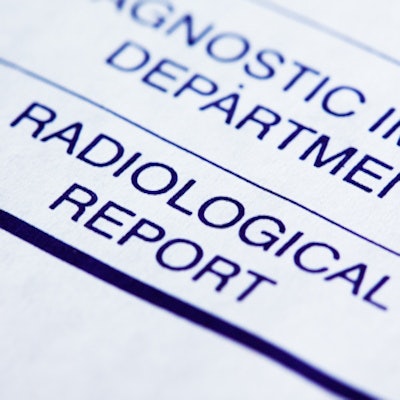
Radiologists have experienced declines in inflation-adjusted reimbursement per Medicare beneficiary despite increases in work volume, a study published August 31 in the Journal of the American College of Radiology found.
A team led by Eric Christensen, PhD, from the Harvey L. Neiman Health Policy Institute in Reston, VA, found that reimbursement decreases due to both inflation and the decline in conversion factor over the past 15 years are "only partially" offset by increased relative value units (RVUs) per beneficiary.
"Declining Medicare reimbursement may further exacerbate access challenges for Medicare beneficiaries with access to radiologic care compared with patients with commercial insurance as well as shortages of radiologists," Christensen and colleagues wrote.
By law, the Medicare program must remain budget neutral. Because of this, increases in volume or RVUs for individual services mean declines in either the conversion factor or assigned RVUs for other services.
Previous research suggests declining reimbursement for radiologic services over time, including when adjusted for inflation. The researchers noted, however, that these studies do not address whether radiologists are increasing their workload and how increased services are offset by declining reimbursement for individual services.
Christensen et al sought to evaluate how budget neutrality influences reimbursement trends per Medicare fee-for-service beneficiary for radiology services.
They used aggregated Medicare Part B claims between 2005 and 2021. From there, the team calculated the percentage change in reimbursement per beneficiary, actual and inflation-adjusted, to radiologists. The group adjusted these trends by separately holding constant RVUs per beneficiary and the conversion factor to show budget neutrality's impact.
The researchers found that unadjusted reimbursement to radiologists per beneficiary increased by 4.2% between 2005 and 2021. However, when adjusted for inflation, it declined by 24.9%. The team also found that the conversion factor declined by 7.9% during the study period.
"Without this decline, the reimbursement per beneficiary would have been nine percentage points higher in 2021 compared with actual," the authors wrote.
The researchers also found that RVUs per beneficiary performed by radiologists increased by 13.1%. That added that if RVUs per beneficiary were kept at 2005 levels, reimbursement per beneficiary would have been 12.1 percentage points lower than seen in 2021.
"Although there was some volume gain, it by no means fully mitigated the reimbursement decline to radiologists for the services they provided to the average Medicare fee-for-service beneficiary," Christensen and colleagues wrote.
The authors suggested that working harder for less reimbursement increases the risk of burnout experienced by radiologists.
Furthermore, they wrote that given the ties between access and payment rates, continued declines in Medicare reimbursement will further erode access to care for Medicare beneficiaries. They cited previous reports showing that payer mixes disproportionately reliant on Medicare and Medicaid are linked to rural hospital closures, and that new imaging technology is first available in locations with payer mixes that are proportionally more commercial insurers.
The full study can be found here.




















